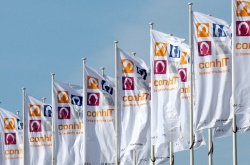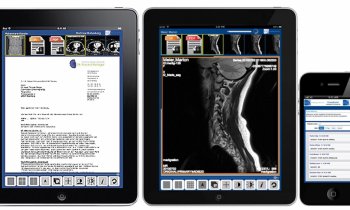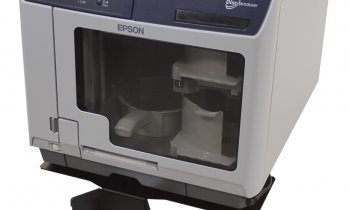conhIT 2010
Report: Meike Lerner
The volcanic ash creating widespread no-fly zones had no significant impact on the success of conhIT, Germany’s largest healthcare IT event; for three days in April some 3,500 experts were there to discuss current trends in their field and visit the IT trade fair to assess new solutions and products. One topic central to this year’s event was the convergence of IT and medical technology, which, based on the experts’ assessment, has already become reality.


From 21 March 2010, software has been defined as an independent medical product. This confirms a paradigm shift, the consequences of which will keep hospitals on their toes for some time: The classic division between IT and medical technology no longer exists; experts have meanwhile started to refer to MIT, i.e. Medical IT. What does this mean for previous structures and the safeguarding of medical networks? An expert session at this year’s conhIT delivered the background and answers.
A two-part lecture, Medical networks and software as a medical product, using the example of telemedical solutions, was given by Armin Gärtner, an appointed sworn expert and responsible for telemedicine
at the Sana Kliniken GmbH, and Gerhard Härdter, head of the Service Centre IT at the Klinikum Stuttgart. Both see medical networks as an essential part of success management in a hospital – hardly any decisions are made without the use of software. Classic IT with its applications andthe requirements for availability and safety is becoming increasingly integrated with direct patient care. Now that software is also classified as a medical product, as long as it has a medical purpose, there are also new communication structures: Individual disciplines must work closer together, as do users and the industry. After all, the users define whether there is a medical purpose.
In terms of coordination between individual departments, Gerhard Härdter sees the potential for an impending vicious circle with the increased networking, unless all those involved in the process join together to seek solutions. Whilst some areas, e.g. radiology, are already well integrated, others, such as pathology, cause this expert some concerns. He named modern operating theatres, where information converges from imaging systems, navigation systems and microscopy, along with patient data, as a good example for highly complex networking. To ensure that this complex is faultlessly networked the creation of a new ‘MIT’ sector is vital. How this is achieved in practice, and what type of training will be necessary, are questions that must be answered in the very near future.
In his lecture, Reinhard Harweg, Head of Computing at the Asklepios Klinik Weissenfels asked How can images and data from medical equipment be made available to other systems within the hospital IT setup? Which tools support structured documentation? How can a PACS be integrated as a central image archive? His hospital was faced with the problem of having a RIS and diagnosis system, as well as a PACS, i.e. three different data sources. The objective was to make that data quickly and easily accessible from just one source.
With the help of a solution from Visus and MEDNOVO Medical Software Solutions GmbH, the PACS system was integrated into the hospital information system (HIS) as a central image archive, and its use as an archive for some sub areas was realised. An interface to all other existing information systems was created via MediColor, a communication software that receives dataand results from medical equipment and then makes these available in edited form to users/clinicians and software systems.
MediColor makes it possible to utilise radiological images (e.g. breast ultrasound) parallel with data from medical devices, such as endoscopes, ultrasound scanners and ECG equipment to facilitate a joint, interdisciplinary diagnosis. Using DICOM, images and data can also be saved and accessed in uncompressed form. The viewer allows access to the images from different departments at all work stations, also independent of MediColor. During an exam, older image data saved in the PACS can also be accessed, displayed and assigned to the exam. This also applies to images that a patient may have brought along from his doctor in digital form. Moreover, the system serves as an instrument for structured diagnosis documentation. The consolidation of image and diagnosis and the interface to the HIS guarantee fast availability of all relevant information. MediColor simply and conveniently controls where which data is archived, made available and transferred.
Result: The PACS and the diagnosis system can access and retrieve all patientrelevant data.
Convergence of IT and med-tech via IHE backbone integration
Dr Kurt Becker, Strategic CIO at the Salzlandkliniken GmbH, on the board of promedtheus AG and head of Health
Technology Management at the Apollon Academy of Healthcare Management, was also faced with a particular challenge. Following a merger, the newly founded Salzlandkliniken comprised three limited liability companies, five hospitals, three IT departments, 90 servers and 1,200 clients. The objective of the new IT infrastructure was to address comprehensive business processes clearly and to install effective fault management. A not to be underestimated prerequisite for the successful operation of this management holding company is the availability of decision-relevant information regardless of location, as well as the networking of the three district hospitals under economic, administrative and clinical considerations to achieve a comprehensive potential for synergy.
In this context, the convergence of medical technology and IT is significant in order to meet the challenges of healthcare technology management in the future – from an organisational as well as economic aspect. One of the projects at the Salzlandkliniken, identified during this process, deals with the design and testing
of a sustainable telematics platform for the holding company via IHE backbone integration, based on IHE standards. Dr Becker’s bottom line is: Making use of standards. It is vital that the users clearly state what they expect from the network when a contract is entered into, to avoid unpleasant surprises during the implementation.
14.05.2010











